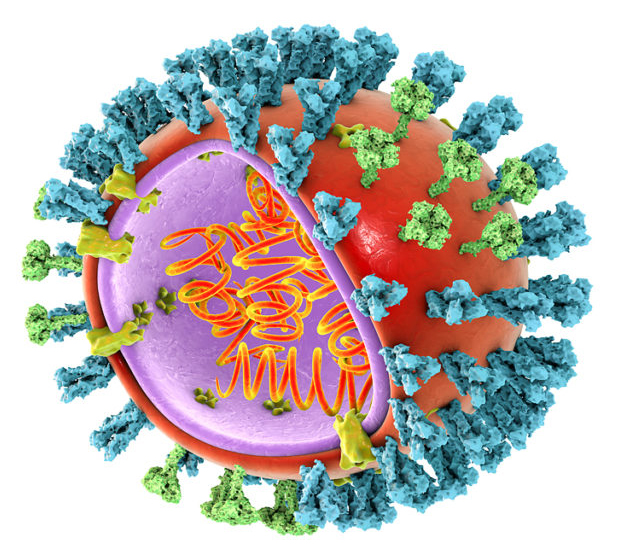

Etiopathogenesis
HIV stands for Human Immunodeficiency Virus. Like all viruses, HIV cannot grow or reproduce on its own. In order to make new copies of itself it must infect the cells of a living organism. HIV belongs to a special class of viruses called retroviruses. Within this class, HIV is placed in the subgroup of lentiviruses.
There are two types of HIV: HIV-1 and HIV-2. Both types are transmitted by sexual contact, through blood, and from mother to child, and they appear to cause clinically indistinguishable AIDS. However, it seems that HIV-2 is less easily transmitted, and the period between initial infection and illness is longer in the case of HIV-2.
Worldwide, the predominant virus is HIV-1, and generally when people refer to HIV without specifying the type of virus they will be referring to HIV-1. The relatively uncommon HIV-2 type is concentrated in West Africa and is rarely found elsewhere.
HIV infects cells in the immune system and the central nervous system. The main cell HIV infects is called a T helper lymphocyte. The T helper cell is a crucial part of the immune system, and co-ordinates the actions of other immune system cells. A large reduction in the number of T helper cells seriously weakens the immune system.
HIV infects the T Helper cell because it has the protein CD4 on its surface, which HIV uses to attach itself to the cell before gaining entry. This is why the T helper cell is sometimes referred to as a CD4+ lymphocyte. Once it has found its way into a cell, HIV produces new copies of itself, which can then go on to infect other cells. The infected cells are often destroyed or stop working properly.
However, battling against HIV the immune system is rapidly killing virus particles and HIV-infected cells, and replacing the T helper When HIV (which is a virus) enters a person's body, special chemicals are produced. These are called antibodies. Antibodies are the body's response to an infection. So if a person has antibodies to HIV in their blood, it means they have been infected with HIV (an exception is the case of an HIV negative baby born to a positive mother, who will retain her antibodies for some months).
Most people develop these antibodies within 3 months of infection. In rare cases, it can take up to 6 months. It would be extremely uncommon to take longer than 6 months for antibodies to develop.
Getting tested earlier than 3 months may result in an unclear test result, as an infected person may not yet have developed antibodies to HIV. The time between infection and the development of antibodies is called the window period.
The ways of HIV transmission, virus concentration, pathogenic characters of HIV and genetic factors of human body have an influence on the specific immune response.
While AIDS occurs, concentration of HIV antibodies decreases dramatically. Neutralized antibodies with anti-HIV cytotoxic T lymphocytes are the crucial components of immune response, that primarily blocks HIV replication. However during the primarily infection there is no full elimination of HIV, that causes the chronic HIV infection. Integration of provirus DNA into the host genetic cells and also destruction of CD4+ lymphocytes leads to seriously weaken of the immune system.
Features
High-level professional and experienced physicians work in our center
Experience
Quality
Positive
24 Hours
